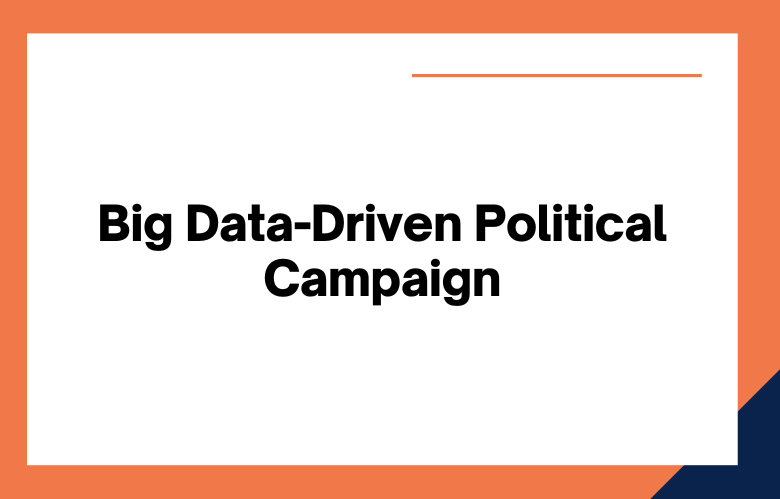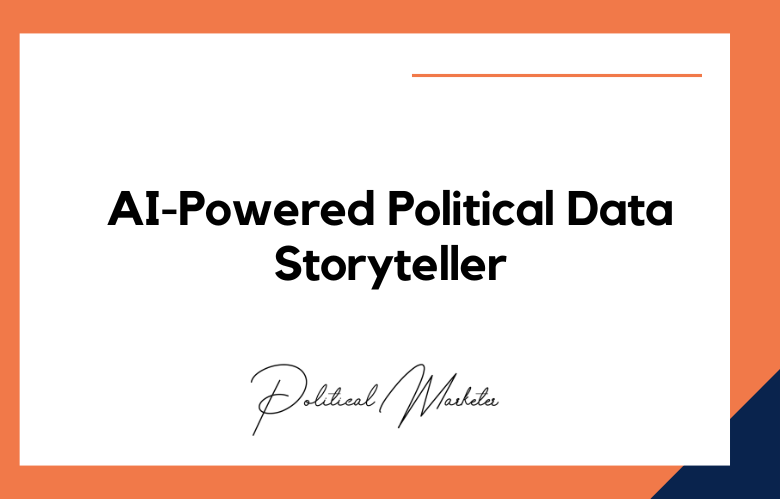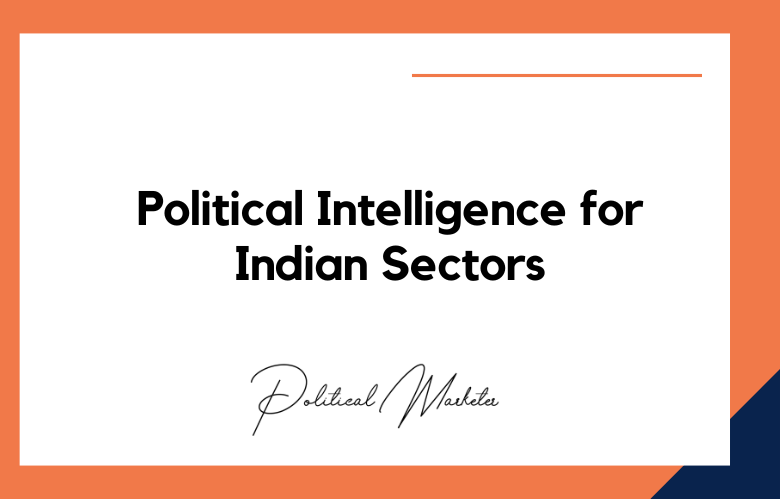In the past few election cycles, we’ve seen a dramatic increase in political campaigns’ use of big data. Campaigns are increasingly using data to target potential voters with customized messages designed to appeal to their interests.
But how exactly do they do this? Let’s take a look.
In today’s digital age, data is everything. And nowhere is that true in the world of politics.
Thanks to big data, the days of relying on hunches and gut instinct to decide where to allocate resources and design campaign strategies are gone.
Now, campaigns can rely on complex data to make informed decisions that will help them win elections.
Big data and your vote: How campaign strategies are changing
Campaigns Start with Data Collection
Campaigns must collect data about voters to target them with tailored messages. They can do so through various means, including public records, surveys, focus groups, and polling data. This data is stored in databases and analyzed to glean insights about voter behavior.
Data Analysis Helps Campaigns Create Targeted Messages
Once a campaign has collected data about potential voters, it can begin to analyze that data to create targeted messages. By looking at factors like voting history, demographic information, and even social media activity, campaigns can develop messages that are more likely to resonate with specific groups.
For example, if a campaign knows that a particular voter is interested in environmental issues, it might send a message about the candidate’s stance on climate change. Or, if it knows that another voter is concerned about the economy, it might send a statement about the candidate’s economic plan.
Customized messages like these are much more likely to persuade someone to vote for a particular candidate than generic messages sent to everyone.
Big Data is Changing the Way Campaigns Operate
As you can see, big data is significantly impacting the way political campaigns operate. By collecting and analyzing data about potential voters, movements can develop targeted messages that are more likely to persuade people to vote for their candidate. These days, big data is becoming increasingly important in winning elections.
Big data is revolutionizing political campaigns in several ways. For one, it’s helping campaigns better target potential voters. In the past, campaigns used broad demographics like age, gender, and location to target voters.
But thanks to big data, they can now get much more specific. For example, they can target voters based on their interests, web browsing history, and even the car they drive. It allows campaigns to create targeted messages more likely to resonate with potential voters.
In addition, big data helps fundraising efforts for campaigns. By analyzing donor data, campaigns can identify potential donors and design tailored strategies. It allows campaigns to raise more money and run more efficiently and effectively.
Big data is also being used in get-out-the-vote (GOTV) efforts. By analyzing voting patterns and demographic data, campaigns can identify voters most likely to support their candidate and design GOTV efforts specifically tailored to them. This helps ensure that every vote counts come election day.
100+ Big Data-Driven Political Campaign Strategies
- Analyzing voter data to determine which issues are most important to them
- Targeting specific voters with tailored messages based on that data
- Tracking how people are responding to the campaign’s messaging to make adjustments
- Building models of likely voters and targeting them specifically
- Mobilizing supporters to participate in get-out-the-vote efforts
- Analyzing social media data to understand how people are talking about the campaign
- Analyzing voter data to determine which issues are most important to them
- Targeting potential voters with personalized messages based on their interests
- Tracking the effectiveness of different campaign strategies
- Collecting and analyzing data from social media platforms
- Building models to predict how people will vote
- Collecting and analyzing data about potential voters
- Targeting specific demographics with tailored messages
- Tracking how people are reacting to the campaign’s messaging
- Examining how different demographics are voting
- Adjusting the campaign’s strategy based on the data collected
- Analyzing voter data to identify critical demographics
- Creating targeted ad campaigns based on that data
- Tracking website visits and interactions to gauge engagement
- Sending out surveys to understand public opinion
- Holding focus groups or town hall meetings to get feedback from voters
- Monitoring social media platforms for sentiment analysis
- Building a volunteer network to help with canvassing, phone banking, and more
- Targeting voters through social media platforms
- Analyzing public opinion polls to determine critical issues
- Tracking voting behavior and trends
- Utilizing data analytics to develop voter profiles
- Generating targeted email campaigns based on voter profiles
- Conducting focus groups and surveys to track public sentiment
- Mobilizing volunteers through online platforms
- Using big data to forecast election outcomes
- Use data to understand your constituents and their needs
- Use data to target potential voters
- Analyze how people are voting and why
- Keep track of what the competition is doing
- Targeting voters through social media platforms
- Analyzing voting trends to understand the electorate better
- Tracking public opinion on critical issues using big data analytics
- Developing targeted messaging based on data analysis
- Mobilizing supporters and volunteers through big data-driven analytics
- Using predictive analytics to identify likely supporters
- Analyzing voter data to identify critical demographics
- Targeting potential voters with customized ads
- Tracking how people are interacting with campaign content
- Gathering feedback from volunteers and staffers
- Analyzing poll results in real-time
- Adjusting campaign strategy as needed
- Targeting voters through their online behavior
- Analyzing public opinion polls to determine critical issues
- Tracking who is talking about the candidate on social media
- Targeting specific demographics with tailored messages
- Encouraging supporters to volunteer and donate money
- Coordinating with local party organizations
- Running targeted ads on social media platforms
- Creating marketing materials that resonate with the target audience
- Targeting voters through social media platforms
- Analyzing voting trends to understand better what issues matter to specific demographics
- Tracking public sentiment on critical issues to adjust campaign messaging
- Monitoring the news and social media for breaking news stories that could impact the race
- Building models to predict voter turnout and support for different candidates
- Gathering data from surveys and exit polls to improve future campaigns
- Analyze voter data to identify critical demographics
- Use predictive analytics to determine which voters are likely to support your candidate.
- Create targeted ad campaigns based on voter data and analytics
- Mobilize volunteers and supporters using Big Data-driven insights
- Analyze social media data to understand how people are talking about the campaign
- Monitor traditional media coverage of the campaign
- Analyze voter data to identify critical demographics
- Use predictive analytics to determine which voters are likely to support your candidate.
- Create targeted ad campaigns based on voter data and analytics
- Mobilize volunteers and supporters using Big Data-driven insights
- Analyze social media data to understand how people are talking about the campaign
- Monitor traditional media coverage of the campaign
- Analyzing voting trends to target campaign resources better
- Tracking public sentiment on social media to gauge popular opinion
- Collecting and analyzing data from surveys
- Monitoring news outlets and blogs for hot topics
- Analyzing financial data to look for donors or potential investments
- Studying demographic information to identify key voter blocks
- Examining past election results to find winning strategies
- Data-driven voter targeting
- Predictive analytics to determine which issues will be most important to voters
- Extensive data analysis of social media activity
- Analysis of voting records and consumer behavior data
- Use of data mining techniques to identify potential donors
- Tracking website visits and email campaign responses
- Analyzing the results of polls and surveys
- Use big data to understand voter behavior
- Analyze social media data to identify influential voters
- my data from other sources, such as voting records and consumer behavior
- Target voters with personalized messages based on their interests
- Use analytics to track the effectiveness of different campaign strategies
- Adjust your tactics as needed to win the election
- Analyzing voter demographics
- Tracking fundraising and spending
- Monitoring public opinion on critical issues
- Analyzing social media data
- Targeting voters with personalized messages
- Analyzing voter data to determine which issues are most important to them
- Targeting potential voters with customized messages based on their interests
- Tracking how people are interacting with campaign content (e.g., how many times they’ve shared a video on social media)
- Analyzing data from past elections to understand voting patterns better
- Building models that can predict how people will vote based on their demographics and other factors
- Setting up systems to track volunteers and donors
- Collecting and analyzing data from polls and surveys
- Monitoring news and social media for mentions of the candidate or campaign
- Analyzing voter data to determine which issues are important to them
- Targeting potential voters with tailored messages based on their interests
- Tracking how people are interacting with campaign materials online and offline
- Building models to predict voting behavior
- Monitoring public opinion on critical issues
- We are setting up call centers and canvassing operations to reach voters directly.
- Using predictive analytics to identify supporters who can mobilize for door-to-door campaigning or phone banking
- Analyzing media coverage of the campaign
- Big data can be used to identify which voters to target with specific campaign messages.
- It can also be used to determine how much money to spend on which TV ads, mailers, or other outreach initiatives.
- Extensive data analysis can help campaigns understand what issues are essential to specific voter segments.
- Targeted voter outreach can increase the effectiveness of a political campaign.
- Big data-driven analytics can also help campaigns track their progress over time.
Conclusion
Using big data in political campaigning is changing how elections are fought and won.
By collecting and analyzing data about potential voters, campaigns can develop targeted messages that are more likely to persuade people to vote for their candidate.
So the next time you receive campaign mail or see an ad on TV, remember that it’s not just a coincidence that it’s explicitly tailored for you—it’s because of big data!
As you can see, big data has changed the landscape of political campaigning.
These 100+ strategies are just the tip of the iceberg. We can assist you if you need help incorporating big data into your campaign.
Our marketing consultant team has experience helping candidates at all levels win their races by utilizing cutting-edge techniques and data analytics.
We’d happily tell you how we could do the same for your campaign. Contact us today for a consultation.
Call: +91 9848321284
Email: [email protected]











